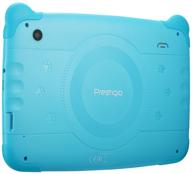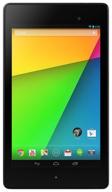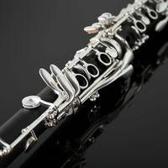
Review on 15.6" Lenovo ThinkBook 15 G2-ITL 1920x1080, Intel Core i5 1135G7 2.4 GHz, RAM 8 GB, SSD 256 GB, Intel Iris Xe Graphics, Windows 10 Pro, 20VE009BRU, Mineral Grey by Dimitar Moskovsky ᠌

Nice product, happy with my purchase and may buy again.
20VE00G0RU In January of 2022, I spent 63 tyr on a Lenovo ThinkBook 15 G2 ITL. The keyboard can't stand it. You can get an external one, but then there's no reason to use a laptop at all if you can get a system unit for half the price. I had been using a Lenovo ThinkPad previously. It's true that old habits die hard, and I do realize that. However, that goes too far. Eventually, I'll grow used to it. When I saw how much the new ThinkPad cost, I knew it didn't make a difference who made it. I viewed every model, picking the parameters - a camera hood, an extra memory slot or from 16GB soldered, a keyboard backlight, an ethernetcomnnector (now irrelevant, because I will use a thunderbolt expander with several usb3, rj45, hdmi, and cards-reader), and an i3-i5 processor from the most recent generation that is not BGA (like so that you can change the percentage to i7). Which I highly doubt I will). Although I did find something if I eliminated the ethernet from the earlier request, I was unable to include hdd2.5. Lenova's summary table for models is a major plus. You can select your region, then download the spreadsheet to Excel, where you can examine its inner workings—how much memory it has, what kind of RAM it uses, whether or not an HDD is an option, and so on. That's all empty for Acer. Reviews detailing how after purchasing a laptop, the author discovered that the keyboard no longer illuminated. There are 7 seals protecting the secret to finding out the entire specifications before purchasing (at least what matrix and whether it will flicker). In this respect, Lenova is completely transparent.
- To be more exact, the display on model 20VE00G0RU does not flicker. "Pencil test" results: a perfect 100 - a camera having a mechanical shutter and a flaw in the shape of a red eye when the shutter is closed; the eye is the same color as the lens flare. The camera is shut, but it shines red and looks like an open lens; the laptop is lightweight but frail, bending slightly if you pick it up by one corner. After using the previous generation Lenovo ThinkPad, this one seems cheap in comparison. - It supports standard-sized Secure Digital (SD) cards but not smaller microSD cards.
- Only an SSD can be added inside, and there are only two total USB ports available. The minimum screen brightness is also too high for use in complete darkness. Which means you'll need a port extender for your Thunderbolt cable or wireless mouse if you want to use both. But there's no reason to bring along more wire garlands. A laptop computer is not intended to be permanently attached to other parts of the user's environment. The keyboard gets warm when used frequently and it's hard to get a regular bluetooth mouse (without usb transmitters). Worse still, there are no visual cues to indicate whether or not the SSD or Wi-Fi are functioning; this will be especially problematic come summer. It's not always clear what causes a computer to freeze solidly. It seems people automatically think that SSDs can't have a slow reaction time (in contrast to HDDs). The keyboard is by far the biggest drawback. The keyboard backlight has a hard PWM (flicker), which is annoying when reading from the screen at night (keyboard flicker is noticeable with peripheral vision) and has a cold shade, very different from the screen and the power button (seen in the first photo). This is most evident in the second blurry image, where the screen and power button flash steadily while the keyboard buttons intermittently loop. - The F1–F12 function buttons are not organized into subsets. A entirely unnecessary and barely functional numeric keypad sits to the right, making it necessary to peek into the letters to locate buttons like F5 (the "File 5" button). It and the directional tabs both feature Home and End buttons that are identical. The functionality of text editors varies. When this happens, pressing Ctrl + Fn + Home and subsequently Ctrl + Fn + Left Arrow will make things operate as they should (instead of Home, "7" is printed; for End, "1" is printed). The text becomes useless to edit or navigate through. Sending Ctrl+Alt+End is not supported in RDP. You have to disable Fn before activating or deactivating NumLock. This works perfectly on my ancient Lenovo ThinkPad.
New products
Comments (0)
Top products in 📱 Tablets
Another interesting products

Refurbished 2019 Apple iMac with Retina 4K/3.6 GHz Intel Core i3 🖥️ Quad-Core (21.5-Inch, 8GB RAM, 1TB) - Silver: Ultimate Deal on a Powerful Renewed Desktop!

13 Review

HP Pavilion Gaming Desktop Computer, Ryzen 5 3500 Processor, NVIDIA GTX 1650 4 GB, 8 GB RAM, 512 GB SSD, Windows 10 Home (TG01-0030, Black)

11 Review
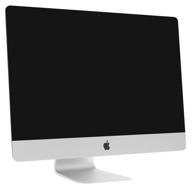
27" Apple iMac All-in-One (Retina 5K, Mid 2020) MXWT2RU/A, 5120x2880, Intel Core i5 3.1GHz, 8GB RAM, 256GB SSD, AMD Radeon Pro 5300, MacOS, Silver

13 Review
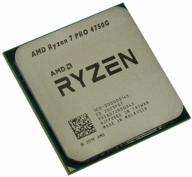
Processor AMD Ryzen 7 PRO 4750G AM4, 8 x 3600 MHz, OEM

11 Review


